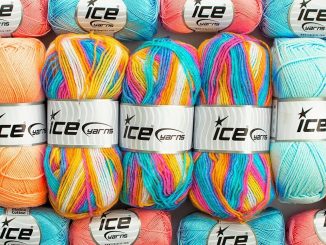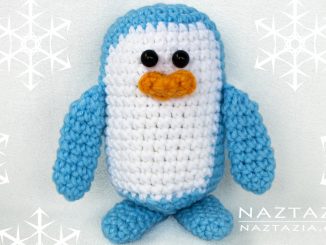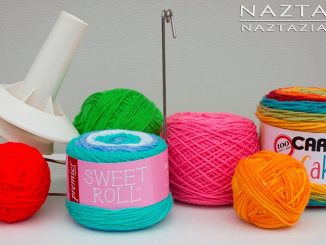How to Substitute Yarn in a Crochet and Knitting Pattern
Yarn substitutions are easy to do in crochet and knitting. Consider weight, gauge, and fiber content when doing so.
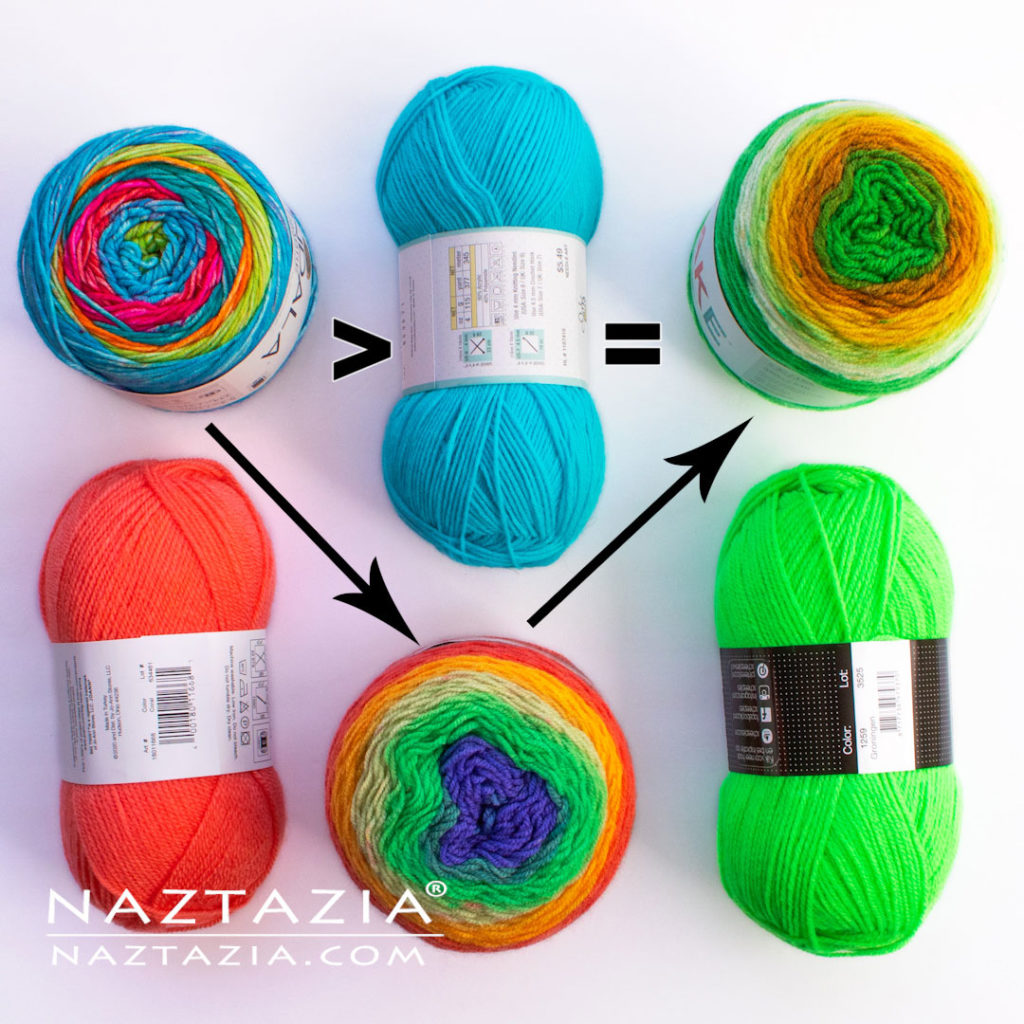
How to Substitute One Yarn for Another
Have you ever found a nice crochet or knit pattern before? Then you look at the yarn requirements and find the yarn is either sold out or discontinued? You might wonder what other yarn will work for this pattern. This post will discuss yarn substitutions.
There are three things to take into consideration when substituting yarn. First, look at the weight, or thickness of the yarn. This is usually found on the label of the yarn, or, in a Google Search if you don’t have the yarn available. Second, look at the knitting or crochet gauge, or both. This tells you more precise measurements of the yarn. Finally, look at the fiber content.
Yarn Weight
Yarn weight simply refers to the thickness of the yarn. Some yarn is super thin, while other yarn is super thick. If you find a yarn skein and it says “worsted weight,” you’ll know that that is an average or medium weight yarn.
Ideally, when you are substituting one yarn for another yarn, you’ll want to use a yarn with the same Yarn Weight as the original yarn.
Different countries have different terminology they use to describe how thick a yarn is. In the USA, we have a system of numbers as well as names. In other countries, there are some similarities and some differences in classification of yarn. For example, in America, we refer to a thicker yarn as a bulky weight yarn. In Great Britain, you might refer to the very same yarn as a chunky weight yarn.
Below is a chart that helps sort out some of the names and numbers. Yarn that is referred to as in the zero (0) category is considered the thinnest yarn. Yarn that is in the seven (7) category is considered the thickest yarn.
| Weight of Yarn | Common Names |
| [0] Lace | Lace, Thread, Cobweb, Light Fingering, #10 Crochet Thread |
| [1] Super Fine | Super Fine, Sock, Fingering, Baby, #3 Crochet Thread, 4-ply |
| [2] Fine | Fine, Sport, Baby, 5-ply |
| [3] Light | Light, DK, Light Worsted, 8-ply |
| [4] Medium | Medium, Worsted, Afghan, Aran, 10-ply |
| [5] Bulky | Bulky, Chunky, Craft, Rug, 12-ply |
| [6] Super Bulky | Super Bulky, Super Chunky, Roving, 16-ply |
| [7] Jumbo | Jumbo |
Some Considerations
When you look at the above chart, you’ll find that both a [1] Super Fine and a [2] Fine yarn could be called a “Baby” weight yarn. To add more confusion in the mix, some yarn is marketed as “Baby Yarn” simply because it’s soft and comes in pastel colors. However, some “Baby Yarn” is a [4] Medium or even a [5] Bulky yarn instead!
In some countries, you’ll find the term “10-ply” to refer to medium-weight yarn. Technically, all yarn is made up of plies, or thinner strands that are then twisted together. Some yarn is a roving type of yarn, where there is only one ply. Some yarn like Red Heart Super Saver is a four-ply yarn, where four strands are twisted together to make up the medium-weight yarn. In the case of “10-ply” weight, this simply means “medium weight” and does not refer to the number of strands that go into making the yarn.
Also, as you get into the Super Bulky weight and Jumbo yarns, these may or may not be easy to substitute. You could have a jumbo yarn that is 1/2 inch in diameter. Or one that is 1 inch in diameter. As the number gets higher, the precision gets a little lower.

Gauge
Gauge is a critical measurement used in crochet and knitting. It refers to the number of stitches you can make and the number of rows you can make usually within a 4 inch by 4 inch swatch, or test piece. If you follow the metric system, your swatch size is 10 centimeters by 10 centimeters.
Many yarn labels have both a knitting and crochet gauge on them. If the label only has a knitting gauge on it, it really doesn’t matter, as long as your original yarn has the knitting gauge on it too.
Ideally, when you are substituting one yarn for another yarn, you’ll want to use a yarn with the same Gauge as the original yarn.
Sometimes you’ll have to do a Google Search on the yarn to find its gauge, as manufacturers can’t always print everything there is to know about the yarn on its label.
You can watch a video tutorial of mine on how crucial gauge is to getting a pattern to turn out the correct size.
Fiber Content
Fiber Content of a yarn describes what material or materials the yarn contains. There are plant fibers like cotton, hemp, and bamboo, which produce a strong yarn. Animal fibers like sheep’s wool, cashmere, and alpaca produce a warm yarn. And synthetic fibers like acrylic and polyester create easy-to-wash yarn types.
Ideally, when you are substituting one yarn for another yarn, you’ll want to use a yarn with the same Fiber Content as the original yarn.
It’s important to try and use the same fiber content as the original pattern, otherwise the item might turn out differently. For example, a pattern that is for a nice soft, lightweight shawl with a lovely drape might use bamboo yarn. If you use organic sheep’s wool, you might not get the same softness and drape in your shawl.
On the other hand, if the pattern calls for two strands of cotton to make a handbag, using two strands of a very soft acrylic yarn might not work very well. Your handbag won’t be as strong and hold its shape as well.
Summary
In conclusion, when substituting one yarn for another, try to use a yarn with the same weight, gauge and fiber content. And be sure to watch my video tutorial on yarn substitutions!
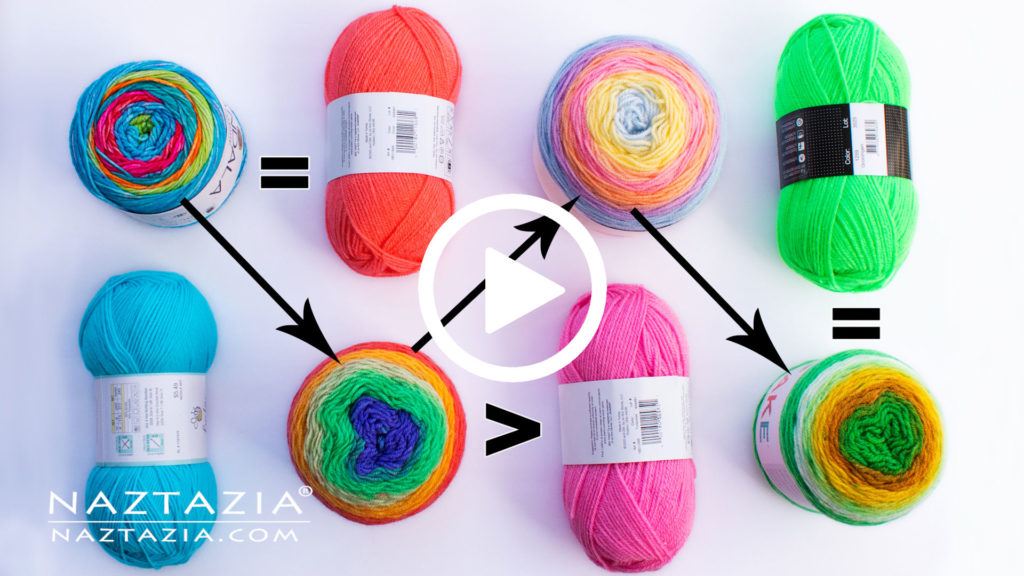
Nail polish used in this video includes:

